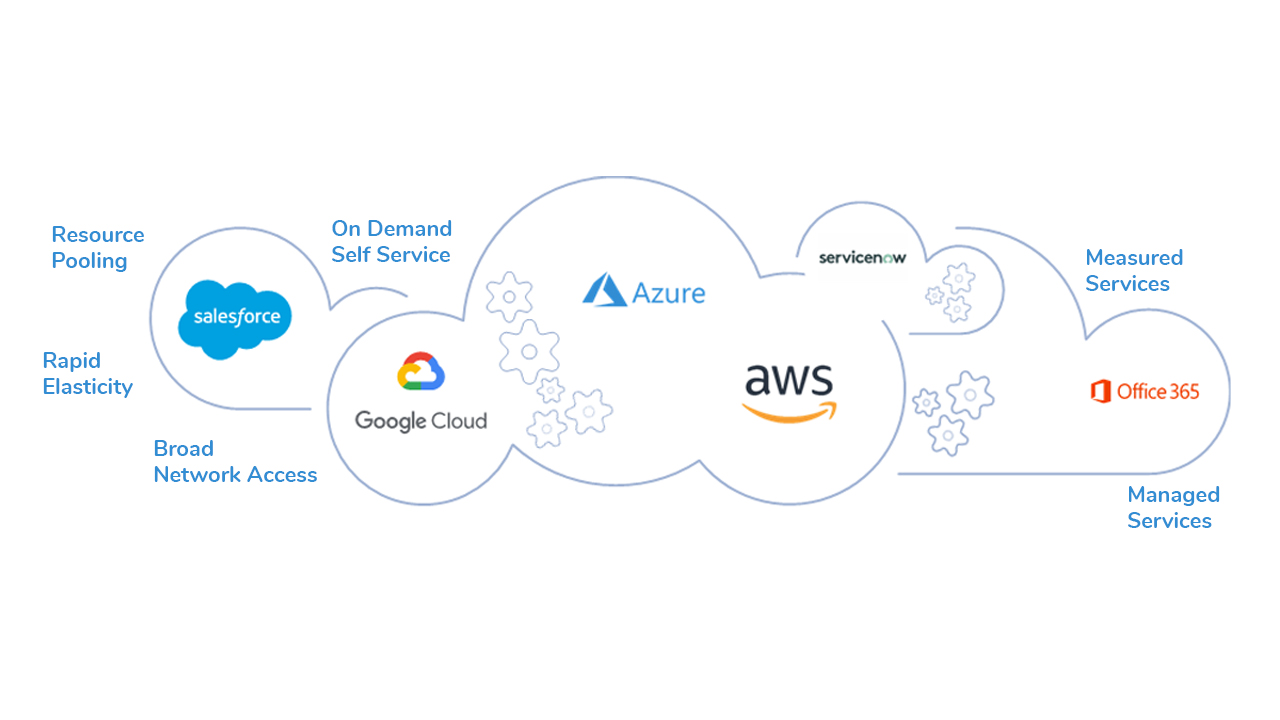Increase Your Online Visibility with LinkDaddy Cloud Services: Reliable Techniques for Cloud Services Press Release
Increase Your Online Visibility with LinkDaddy Cloud Services: Reliable Techniques for Cloud Services Press Release
Blog Article
Simplify Your Framework With Cloud Provider
As companies browse the ever-evolving landscape of technology and data management, the function of cloud services in simplifying framework has become progressively prominent. The appeal of streamlined processes, enhanced performance, and enhanced resource allowance through cloud services is undeniable. The journey in the direction of a much more cost-efficient and active IT facilities involves even more than just moving to the cloud. It calls for a critical method and a deep understanding of the subtleties of cloud adoption. So, just how can organizations effectively browse this shift and absolutely open the possibility of cloud services for streamlining their infrastructure?
Advantages of Cloud Services
Cloud services provide a streamlined approach to handling IT facilities, supplying companies with cost-efficiency, scalability, and flexibility. One of the key advantages of cloud services is the scalability they provide.
Additionally, cloud solutions remove the requirement for companies to purchase pricey software and hardware. This cost-efficiency is a substantial advantage, especially for tiny to medium-sized business wanting to minimize ahead of time expenses. By utilizing cloud solutions, services can access top notch IT resources without the hefty rate tag related to traditional facilities setups.
Additionally, cloud solutions supply companies with the versatility to access their data and applications from anywhere with a web link. This degree of accessibility improves cooperation among teams, enables remote job, and boosts general performance. The flexibility provided by cloud solutions encourages businesses to adapt quickly to transforming market problems and consumer demands.
Cost Savings and Scalability
Along with the functional benefits highlighted earlier, the combination of cloud services right into a firm's framework brings forth considerable expense savings and enhanced scalability. Cloud solutions use a pay-as-you-go version, permitting organizations to range resources up or down based on present demands, thus preventing the expenses related to preserving excess capacity. This versatility makes it possible for companies to adjust swiftly to rising and fall demands without incurring unnecessary expenditures.
Additionally, cloud services remove the requirement for ahead of time investments in software and hardware, decreasing capital investment. General expenses are additionally minimized as business no more require to manage and keep physical servers, leading to lower power intake and IT staffing prices. In addition, cloud solutions provide automated updates and upkeep, guaranteeing that the infrastructure continues to be up-to-date and safe without requiring manual interventions.
Improved Safety Measures
Applying rigid safety and security procedures is extremely important when integrating cloud solutions into a business's framework to secure delicate information and ensure compliance with sector policies. Cloud company offer boosted protection functions such as data file encryption, firewall software security, and multi-factor authentication to reduce cybersecurity risks. Encryption assists secure data both at remainder and en route, making sure that only authorized customers can access delicate information. Firewall programs serve as a barrier in between interior networks and external threats, tracking and regulating outbound and incoming network website traffic. Multi-factor authentication includes an extra layer of safety and security by requiring individuals to provide numerous types of confirmation before accessing the cloud services.
Furthermore, regular protection audits and conformity assessments assist ensure and determine vulnerabilities adherence to sector standards. Companies can also take advantage of functions like computerized safety updates and real-time threat monitoring provided by cloud service carriers. By focusing on protection actions and staying aggressive in addressing potential threats, services can confidently take advantage of cloud services while securing their useful data from unauthorized gain access to or violations.
Transitioning to Cloud Facilities
To successfully incorporate cloud services right into a firm's framework, a structured strategy that deals with the change in the direction of cloud-based remedies is essential. Transitioning to shadow facilities entails careful preparation and implementation to guarantee a smooth movement procedure - linkdaddy cloud services.
As soon as the assessment is total, a movement approach must be created. This strategy must outline the timeline, sources, and responsibilities for relocating each component to the cloud. It is important to connect this plan plainly to all stakeholders to guarantee his response positioning and decrease interruptions throughout the shift.
During the movement surveillance, screening and procedure are important to identify and address any issues without delay. Normal checkpoints need to be developed to track progression and make necessary changes. Additionally, training for employees on using cloud services ought to be given to make certain an effective change and make the most of the benefits of the brand-new framework.
Ideal Practices for Cloud Adoption
Effective adoption of cloud solutions pivots on the critical alignment of business goals with technological capabilities and business readiness. To ensure a smooth shift to the cloud, organizations ought to start by conducting an extensive analysis of their present facilities and identifying which workloads are best fit for cloud movement. It is crucial to involve crucial stakeholders from various divisions in the decision-making procedure to obtain buy-in and deal with any issues at an early stage.
Another ideal method for cloud adoption is to prioritize safety and conformity. Organizations needs to carefully review the safety actions supplied by cloud provider and make certain that their data is protected find out this here according to sector requirements and governing requirements. Applying durable data file encryption, gain access to controls, and regular protection audits can help reduce dangers related to cloud adoption.

Final Thought

As businesses browse the ever-evolving landscape of technology and information administration, the function of cloud services in streamlining framework has actually ended up being increasingly famous - cloud services press release. Exactly how can services efficiently browse this change and genuinely unlock discover this info here the potential of cloud services for simplifying their framework?
Cloud services offer a structured strategy to handling IT infrastructure, giving organizations with adaptability, cost-efficiency, and scalability. By utilizing cloud services, companies can access premium IT resources without the hefty cost tag linked with conventional infrastructure arrangements.
To guarantee a smooth change to the cloud, organizations must start by carrying out a comprehensive evaluation of their existing framework and determining which workloads are best fit for cloud migration.
Report this page